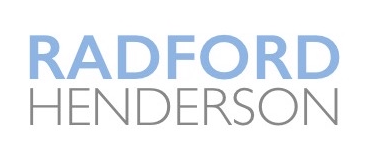The Economics of Content Strategy

Coming up with a content strategy for your brand can feel like an overwhelming process – especially if you’re looking at a blank page and trying to understand what information would be most valuable. Many times what happens, is that people use their best judgment to determine what content would be valuable based on their own feelings about their brand’s products and services. However, this strategy can wear thin with readers who are looking for useful information – not a continual sales pitch.
What we’d like to recommend instead, is a simple two-step process to content strategy that is based in the economic principles of supply and demand. By taking the time to think about content in this way, you’ll be better able to create content that is focused on the needs of your consumers – not just the needs of your business.
The 5 Dimensions of Demand
When studying the laws of supply and demand in economics, we traditionally look at supply first. Because our goal is to prioritize the needs of the consumer, however, we’re going to begin by looking at demand. This is a great place to start, because if you can put your consumers’ needs before your own, you’ll be better able to create the content they’re looking for – content that ultimately draws them into your brand.
In general, we like to think about consumers having five needs as it relates to content. As you think about your brand and what it offers, I suggest thinking about each of these categories and the types of content you currently have – or could publish – that is applicable to each.
1. Education
The demand for content usually begins with education, because when consumers have a need, they’ll want to understand their options for responding to that need. What information can you provide that will help your audience understand something better?
2. Utility
From the weather forecast to their gift card balance, this content helps consumers accomplish something specific. How can you make your audience’s lives easier or help them achieve a particular goal?
3. Entertainment
This content is just for fun. What could you provide your audience that they would find intriguing or enjoyable?
4. Inspiration
By broadening your audience’s thinking and sharing new ideas, you can help them think about ideas and concepts they haven’t seen before. What can you do to inspire your audience?
5. Information
This content category differs from education, as it relates specifically to your brand and the products and services you provide. Besides basic information about the products you’re selling and their features and benefits, research from the Edelman Group shows that consumers are also looking for the following:
- How your products are made
- Where your products are made
- Where your materials are sourced from
- Your company values
- Your history and creation story
- Your company goals
As we think through each of these dimensions, we utilize Google search data to determine which topics hold the highest value for our clients.
This information plays a large role in our Topic Mapping™ process, which we use to create a detailed editorial calendar and content channel plan that directly addresses the current and future needs of each client’s target audience.
Understanding Supply
Now that you’ve taken the time to understand the needs of your audience, it’s time to think in terms of supply by thinking through the following questions:
- Where does your corporate expertise lie? How does that align with consumer demand?
- Are you currently publishing content? If so, how is it performing?
- Who are the current authorities in the space? Are they doing a good job meeting consumer demand or are their gaps that need to be addressed?
By analyzing the current supply in this way, you’ll be able to identify where the opportunities lie for you to step in and develop content that is in high demand. The key here isn’t to replicate content that is currently being successfully produced elsewhere, but to focus on areas that present both the greatest need and the biggest opportunity that align with your brand positioning.





Leave a Reply
Want to join the discussion?Feel free to contribute!